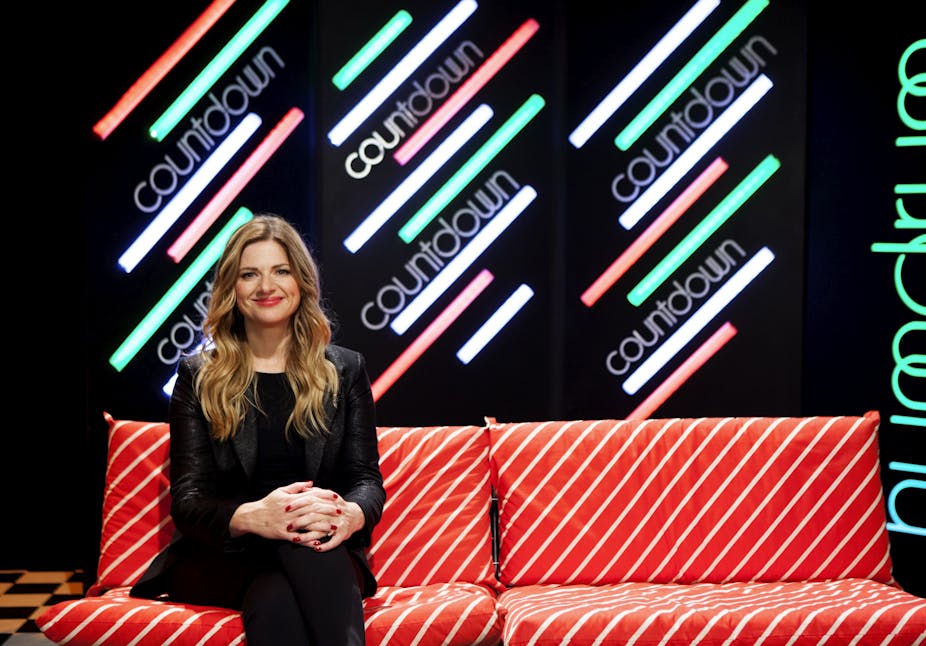Are there lessons to be learnt from the success of the seminal Australian music program Countdown, and the ways in which it bolstered the Australian music industry during the 70s and 80s?
Do Yourself a Favour, which aired recently on ABC, celebrated the 40th anniversary of Countdown while reflecting on its achievements. Along with a sense of nostalgia it reinforced the massive impact that the program had on the Australian music industry during the 70s and 80s.
Countdown aired between 1974 and 1987, with an estimated weekly audience of between 2.5 and 3 million viewers. The show played a pivotal role in connecting the Australian music industry at the time, providing national exposure to a range of artists.
During the retrospective Do Yourself a Favour reference is made to major impact that the show had on record sales. Mark Holden reported that his “Countdown Albums” sold three times more than his previous releases. He directly attributed this jump in sales to the exposure generated by performances on the show. Molly Meldrum also reflected on the impact of Countdown in the book High Voltage Rock ‘n’ Roll.
Before the program bands such as Skyhooks and Sherbet were selling 30-40,000 albums, but after the launch of Countdown these spiked to between 100-200,000 albums.
Gavin Wood, voice-over announcer for Countdown, recalled that record companies reported that the week after a performance on the show singles were selling 4-5,000 a week.
The widespread exposure facilitated by Countdown enabled Australian artists to build a broad fan base. Sherbet, INXS, ACDC and Skyhooks all built their profile through the extensive reach of the show. Reminiscing about the impact of Countdown, Red Symonds of Skyhooks stated during Do Yourself a Favour that:
It was an enormous money spinner for the simple reason that you could then go to anywhere in Australia and people knew who you were and knew your material.
This exposure translated into the development of sustainable careers for a number of musicians, who capitalised on the opportunity to reach a wider audience.
Although the ABC’s Triple J provides a national platform for Australian artists through its radio network, opportunities for original live music performance on Australian television are currently limited.
Reality television programs such as The Voice, Australian Idol and The X Factor focus on performers presenting cover versions of songs during an adjudicated performance.
Recent ratings slumps for The Voice suggest that audiences could be tiring of this format. The constraints of performing cover versions, issues with credibility, and network controlled contracts are not an appealing career path for many musicians.
Countdown often focused on “live” performances in the studio, allowing audiences to connect with the artists as performers. INXS and AC/DC went on to take their music to global audiences, and Countdown gave these bands a forum where they could develop these skills.
Kirk Pengilly of INXS had this to say on Do Yourself a Favour about the early days of Countdown, and it’s impact on the band at the time:
I learnt a lot about stagecraft and how to perform in front of a camera … Countdown played a big part in our formative years … it helped us rehearse for the international stage.
Digital distribution has had an impact, not least in the challenge it presents for finding an alternative, profitable model for music sales, as evidenced by the fact sales are declining. Increasingly consumers are streaming music, which generates less revenue for artists and this accounts for half of digital music sales in Australia.
A sustainable music career relies on income generated through live performances, rather than the sales of recorded product. Australian musicians rely on this income to fund their continued existence in the industry.
Often the method of attracting audiences is via social media, or through exposure via radio networks such as Triple J.
A national television program focused on Australian original music, similar to the format used by Countdown, would benefit the Australian music industry.
Through the exposure to a wider television audience original Australian artists could build a broader fan base. Artists would be provided an opportunity to hone their skills as live performers, preparing them for the extensive touring needed for the development of a sustainable career.
And audiences? Surely they’d like it too …

